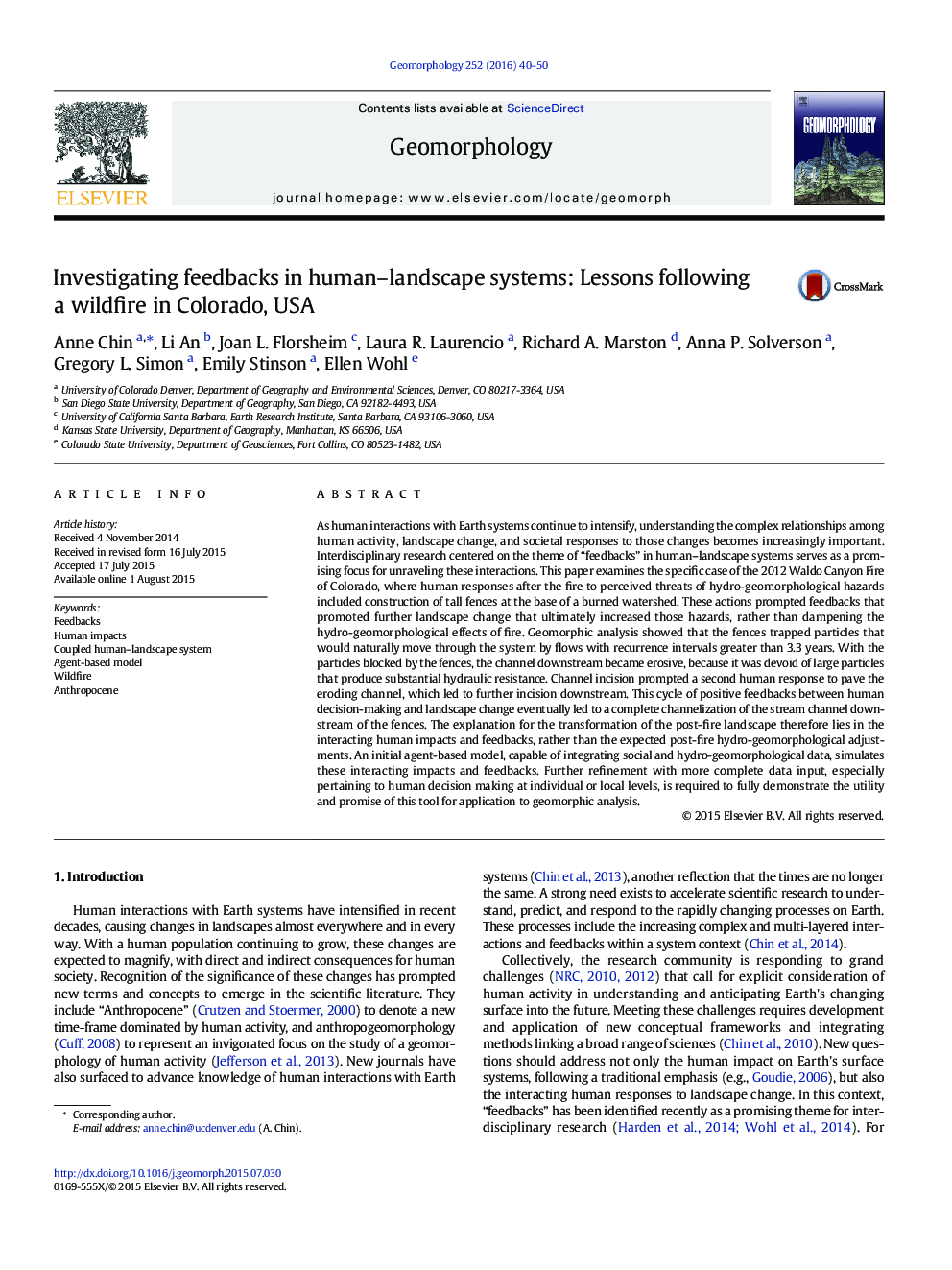| کد مقاله | کد نشریه | سال انتشار | مقاله انگلیسی | نسخه تمام متن |
|---|---|---|---|---|
| 4684125 | 1635397 | 2016 | 11 صفحه PDF | دانلود رایگان |
• Perceived geomorphological hazards following the 2012 Waldo Canyon Fire, Colorado prompted human responses.
• These responses triggered positive feedbacks that promoted further landscape change and ultimately increased those hazards.
• An initial agent-based model captured feedbacks between human decision-making and stream channel response following wildfire.
• Quantifying human decision-making and behavior will inform integrative modeling tools toward predictive capacity.
• Recognizing human-landscape feedbacks is a first step toward slowing or reversing environmental degradation.
As human interactions with Earth systems continue to intensify, understanding the complex relationships among human activity, landscape change, and societal responses to those changes becomes increasingly important. Interdisciplinary research centered on the theme of “feedbacks” in human–landscape systems serves as a promising focus for unraveling these interactions. This paper examines the specific case of the 2012 Waldo Canyon Fire of Colorado, where human responses after the fire to perceived threats of hydro-geomorphological hazards included construction of tall fences at the base of a burned watershed. These actions prompted feedbacks that promoted further landscape change that ultimately increased those hazards, rather than dampening the hydro-geomorphological effects of fire. Geomorphic analysis showed that the fences trapped particles that would naturally move through the system by flows with recurrence intervals greater than 3.3 years. With the particles blocked by the fences, the channel downstream became erosive, because it was devoid of large particles that produce substantial hydraulic resistance. Channel incision prompted a second human response to pave the eroding channel, which led to further incision downstream. This cycle of positive feedbacks between human decision-making and landscape change eventually led to a complete channelization of the stream channel downstream of the fences. The explanation for the transformation of the post-fire landscape therefore lies in the interacting human impacts and feedbacks, rather than the expected post-fire hydro-geomorphological adjustments. An initial agent-based model, capable of integrating social and hydro-geomorphological data, simulates these interacting impacts and feedbacks. Further refinement with more complete data input, especially pertaining to human decision making at individual or local levels, is required to fully demonstrate the utility and promise of this tool for application to geomorphic analysis.
Journal: Geomorphology - Volume 252, 1 January 2016, Pages 40–50
